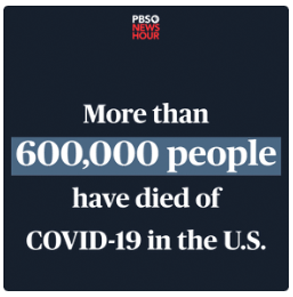Health Plan Weekly
-
Startup Insurers Face High Risk-Adjustment Payouts for 2022 Benefit Year
Participants in the Affordable Care Act risk adjustment program will pay a record $9.24 billion for the 2022 benefit year, according to CMS. Among the 608 issuers that participated in the program, startup insurers owe the highest amounts of payouts, while a handful Blue Cross Blue Shield companies are slated to receive significant payments.
The ACA’s risk adjustment program, launched in 2014, transfers funds from insurers that cover lower-risk enrollees to insurers that cover higher-cost and higher-risk populations in the individual and small group health insurance markets.

-
News Briefs: Whistleblower Alleges California Blues Didn’t Pay Taxes
Two Blues affiliates allegedly avoided hundreds of millions of dollars in taxes between 2016 and 2020, a whistleblower said in a complaint filed with the Internal Revenue Service (IRS). Blue Shield of California is alleged to have evaded $111 million in taxes during that period, and Elevance Health's California division allegedly avoided paying $60 million. According to a Stat report, “If the IRS finds Blue Shield violated tax laws, the insurer could owe more than $300 million, an amount that would include the unpaid taxes as well as penalties for committing fraud. Elevance could owe $165 million. If successful, whistleblowers are eligible to receive between 15%-30% of whatever the IRS collects.” The same whistleblower, Michael Johnson, “also filed a similar complaint about Blue Shield in 2018,” per Stat, which the IRS ultimately dismissed.
-
Experts Expect Small Decrease in ACA Premiums From New Short-Term Plan Limits
In a new proposed regulation, the Biden administration seeks to reinstate limits on short-term, limited-duration insurance (STLDI) plans that the Trump administration had loosened — a move that health policy experts predict will have a small but positive effect on the Affordable Care Act-compliant plan market.
But HHS and the Labor and Treasury departments didn’t stop there — they also proposed changes to hospital and fixed indemnity policies and sought comments on whether they should address the proliferation of level-funded plans in future rulemaking.
“I thought that was interesting,” says Katherine Hempstead, senior policy adviser at the Robert Wood Johnson Foundation. “That seems like kind of an effort to, as much as possible, tidy up all those shards of business in the marketplace that are not good for the ACA-compliant market — either the individual or small group [segment].”

-
Transparency Legislation Hasn’t Yet Led to Cost Savings for State Employee Health Plans
Payers generally applauded the passage of the No Surprises Act (NSA) in 2020 and the Consolidated Appropriations Act (CAA) of 2021, thinking the bills would lead to more transparency and lower costs. However, although the two pieces of legislation have contributed to larger amounts of publicly available claims and pricing data, state employee health plans (SEHPs) report that “significant barriers constrain translating improved access to data into more aggressive cost containment strategies,” according to a report released on July 10 from Georgetown University’s Center on Health Insurance Reforms (CHIR).
Sabrina Corlette, CHIR’s founder and co-director, tells AIS Health that from conducting the research and speaking with SEHP administrators she’s found “it’s going to take a while for the impact of those laws to be felt.” SEHPs provide health insurance for state and local government employees and are often among the largest payers in any given state.

-
House Advances Site of Care Identification, Third-Party Fee Disclosure Bills
As part of a recently introduced health care package, the U.S. House of Representatives’ Committee on Education and the Workforce on July 12 unanimously advanced a bill that would require hospital groups to create individual identifiers for outpatient departments — a major step toward so-called “site neutrality,” a long-held goal of plan sponsors and carriers. The other bills, meanwhile, are mainly focused on PBMs, which have become the hottest health care topic — and for some members, the most notable health care villains — in the current session of Congress.
The overwhelming support from members of both parties for each of the bills bodes well for their eventual passage. So does their alignment with bills currently under consideration in the Senate, according to one D.C. insider.












